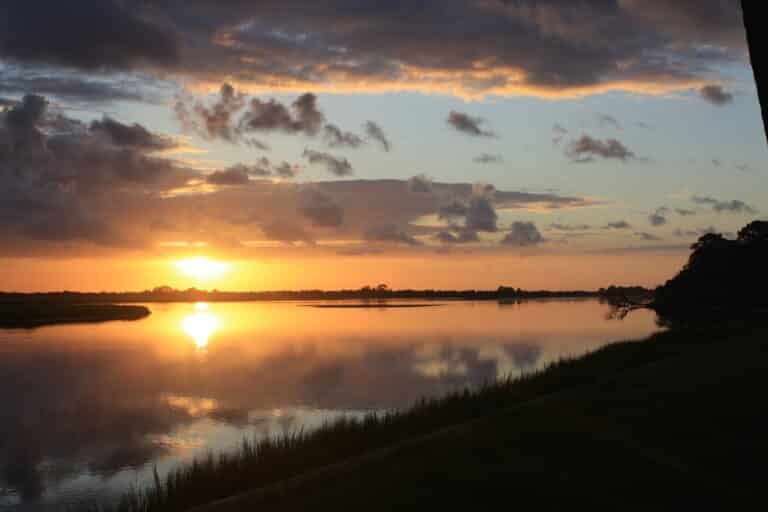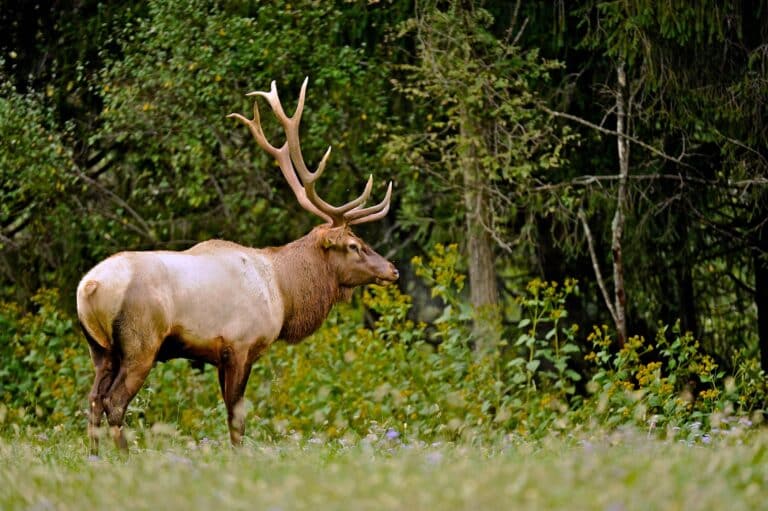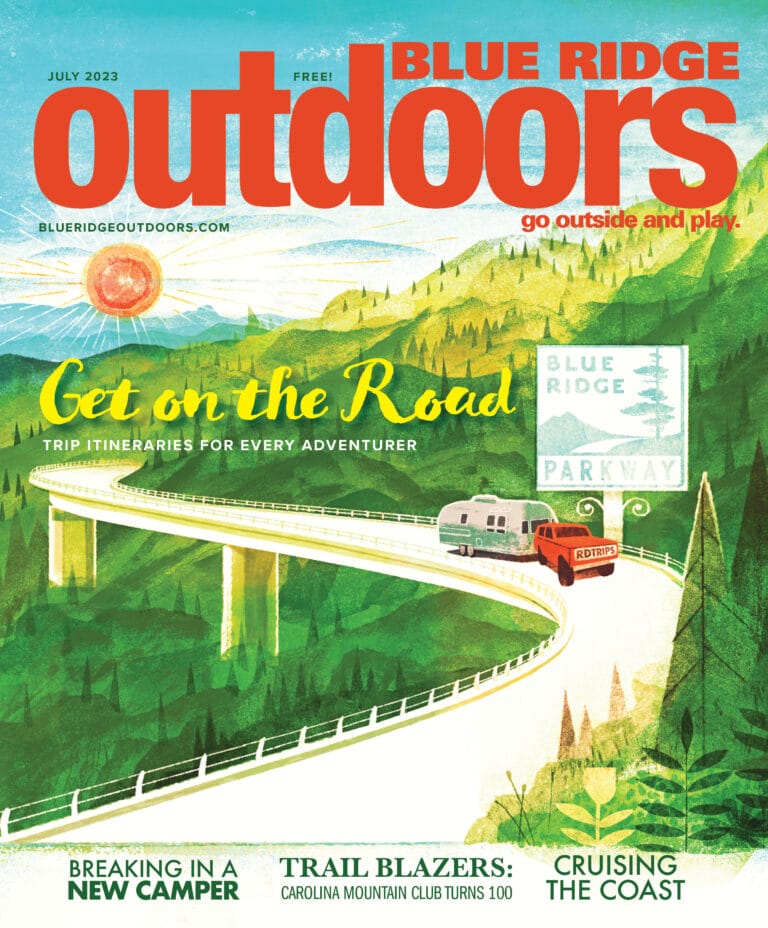The Southeast’s Wildest Wilderness and Most Pristine Outdoor Oases
Joyce Kilmer-Slickrock Wilderness, North Carolina
What would our forests look like if they were never logged? They’d look like the Joyce Kilmer-Slickrock Wilderness, one of the largest existing tracts of old growth forest left in the Southeast.
“There aren’t too many forests that have been left to their own devices in the South,” says Nikki Smathers of the Southern Appalachian Forest Coalition. “Kilmer-Slickrock has true backcountry characteristics.”
While the rest of this region was being stripped at the turn of the 20th century, a small corner of the 17,000+ acres that comprise the Kilmer-Slickrock Wilderness area was left untouched thanks to a series of mishaps and misadventures by various timber companies. As a result, today’s Joyce Kilmer Memorial Forest is a 3,000-acre sanctuary filled with massive old growth hemlocks and poplars, some of which stand 20-feet around and 100-feet tall. An easy two-mile trail loops through the Memorial Forest.
But the surrounding wilderness terrain is rugged, to say the least. Elevation varies between 1,000 feet on the forest floor and 5,300 feet at the high point of Stratton Bald. In between are rock outcroppings, dense hardwood forests, plunging creeks, and 60 miles of hiking trails that criss-cross one of the most diverse ecosystems in the region. Everything from black bear to salamanders to synchronous fireflies call the wilderness home.
“The diversity of species is amazing,” Smathers says. “Anytime you have an undisturbed natural area where the forest has been left alone, you’re going to have diversity. These animals haven’t been run out by logging and development, which is rare in this area.”
Explore It
“You can feel really isolated in Slickrock. I’ve been in there a week at a time and never saw another person,” says Hugh Irwin, conservation coordinator for SAFC and a Kilmer-Slickrock expert. “But the wilderness is very approachable at the same time. It’s user friendly.”
The 13.3-mile Slickrock Creek Trail is the gem of trail system. The footpath follows Slickrock Creek while passing a handful of waterfalls, each with their own swimming hole. Check out Wildcat Falls, a series of three drops ranging from six feet to 20 feet. www.joycekilmerslickrock.com.
Big South Fork River National Recreation Area, Tennessee
“Remote is an understatement,” says Laquia Anderson, a guide for Sheltowee Trace Outfitters. She’s talking about the Big South Fork River in northern Tennessee, one of the only free flowing whitewater rivers left in the Southeast and one of the most remote and wildest stretches of water east of the Mississippi.
“It’s at least a half hour ride on rough roads just to get to the river from the nearest town,” continues Anderson. Then the river itself is surrounded by sheer, massive sandstone cliffs and green gorges.” You’ll find almost 90 miles of scenic gorges and valleys to paddle within the Big South Fork National Recreation Area, which is comprised of 123,000 acres along the Cumberland Plateau. “This river doesn’t see the tourist traffic that other areas see in the region,” Anderson says. “It’s just not on the radar.”
That sucks for the masses but rocks for you, because you’ll have the Big South Fork all to yourself. Paddle class IV water around dinosaur size boulders before setting up camp on an island in the middle of the river.
Explore It
The best paddling on the river is the Gorge Section-11-miles of class III-IV water through a deep sandstone canyon, highlighted by three class IV rapids within 100 yards of each other. Camp near Burnt Mill Bridge and arrange a shuttle with Sheltowee Trace Outfitters for a day trip, or tack on the upper Brewster Bridge section or lower Canyons section for a multi-day trip. Either way, you won’t see anything other than the occasional bathroom facility as far as development goes. Wildlife is a different story. “You’ll see things here that you won’t see anywhere else,” Anderson says.www.ky-rafting.com.
Okefenokee Swamp, Georgia
What you have to remember about the Okefenokee Swamp is that the alligators were there first. So were the bears and the snakes and the frogs and all of the estimated 25,000 reptiles that reside in the swamp. You are a guest in the Okefenokee, and you probably feel that more here than anywhere else in the Southeast. The 396,000-acre Okefenokee National Wildlife Refuge is one of the oldest and most well-preserved fresh water areas in the country.
The swamp sits inside a huge depression that used to be part of the ocean floor, and you can only reach the heart of the wilderness refuge by canoe. More than 120 miles of canoe trails meander through cypress forests, pine uplands, and wet prairies. You could spend a week in the swamp and never double back over your tracks thanks to the abundant terrain and slow-moving water. Paddling the water trails, which are stained dark by the decaying vegetation, is always slow-going because there’s little to no current throughout the swamp.
Explore It
There are only seven overnight camping platforms inside the swamp, which means only seven small groups can be in the refuge on any given night. But Okefenokee management goes a step further by assigning specific groups to specific trails, so you’re essentially guaranteed a completely isolated adventure.
Call two months in advance for a backcountry reservation (as early as possible the morning reservations are available) and you might get your pick of trails. The Orange Trail, which traverses the entire length of the Okefenokee, offers the most remote stretch of water in the area. Pitch your tent on the raised platform along the trail and don’t miss out on a full-moon paddle, when the frogs sing in chorus and the alligators are out in droves. If you can’t get one of the coveted backcountry spots, the Stephen C. Foster State Park sits on the western edge of the Okefenokee and offers camping and day canoe trips into the refuge. www.fws.gov/okefenokee/.
Cape Romain National Wildlife Refuge, South Caroling
We’ve managed to stick the flag of development along most of our coast and barrier islands over the last couple of centuries, so it’s hard to imagine one island off the Southern coast-let alone a string of islands-without skyscraping condo developments. But the Cape Romain National Wildlife Refuge is just that: 22 miles of wild, uninhabited islands off South Carolina’s coast with little to no signs of human manipulation. In fact, it’s the longest stretch of undeveloped barrier islands on the Eastern seaboard. The refuge was established in 1932 as a sanctuary for migratory birds. Today, almost 65,000 acres of islands, muddy keys, salt marshes, sandy beaches, maritime forests, tidal creeks, and open water are protected from the spoils of man. The refuge plays an integral role in the recovery of the endangered red wolf and is one of the largest nesting grounds of the endangered logger head turtle. The islands also boast the largest population of alligators north of the Everglades, and shelter the endangered woodstork and the Atlantic bottlenose dolphin.
“Not only can you see all kinds of endangered species in the refuge, but it’s aone of the most remote places on th Eastern seaboard,” says Luke Pope, a naturalist and kayak guide for Coastal Expeditions, a guide service that runs trips into the refuge.
Explore It
The refuge is day use only and accessible only by boat or kayak, and many of the islands in the refuge are too remote and sensitive to accommodate human traffic. Bull Island is your best bet for adventure. The largest of the barrier islands is six miles long and two miles wide, and it offers 16 miles of dirt roads for hiking-as well as a long, broad beach littered with shells. The creeks behind Bull Island were a popular hangout for pirates plundering ships along the South Carolina coast; now they offer the kayaker an extensive system of waterways for exploration.
You can take a ferry onto Bull island, or you could use neighboring Capers Island as your home base. Capers is run by the state and has pristine beach camping, offering the perfect launching pad for day trips over to Bull by kayak. During the off season, Coastal Expeditions will also run you deeper into the refuge to places like Raccoon Key, an ocean-front muddy pile of shells that migratory birds use for nesting during spring and summer. www.coastalexpeditions.com.
Cranberry Wilderness & Backcountry, West Virginia
At 35,564 acres, the Cranberry Wilderness is the largest single Wilderness area east of the Mississippi. Adjacent to the Cranberry Wilderness is the 26,000-acre Cranberry Backcountry, with over 100 miles of rugged, remote trails for mountain bikers. Together, the Cranberry Wilderness and Backcountry Areas constitute the wildest public lands in the Southern Appalachians.
Two scenic rivers pass through the area – the Middle Fork of the Williams River and the Cranberry River. Seven three-sided shelters are located along the Cranberry River and are available on a first come, first served basis.
In the backcountry (no bikes in the widerness), bike opportunities are epic. “It’s gnarly riding and you’re definitely out in the middle of nowhere,” says Greg Moore, executive director of the West Virginia Mountain Bike Association. “You’re way deep in the laurel.”
One of the most unusual features in the region is the Cranberry Glades Botanical Area, a 750 acre bog located at the southern tip of the Wilderness. As the southernmost bog found in the United States, Cranberry Glades was formed by glaciers and contains rare carnivorous or insect-eating plants. A half-mile boardwalk trail leads you into this jaw-droppingly beautiful area.
Explore It
Your best bet is to use the Cranberry Nature Center as your home base. Mountain bikers can park here and start riding the Cranberry/Tri Rivers Trail, which is a 16-mile rail trail that serves as the main vein through the backcountry. Most singletrack opportunities begin along this well-packed path, so use it as your compass. Get deep in the woods, find a campsite, and be sure to experience the Kennison Mountain Trail, which locals call the craziest downhill around. One of the best portals to the wilderness hikes is the 12-mile railroad grade trail skirting the Middle Fork of the Williams. Launch deeper into the wilds from this flat, level river trail.







